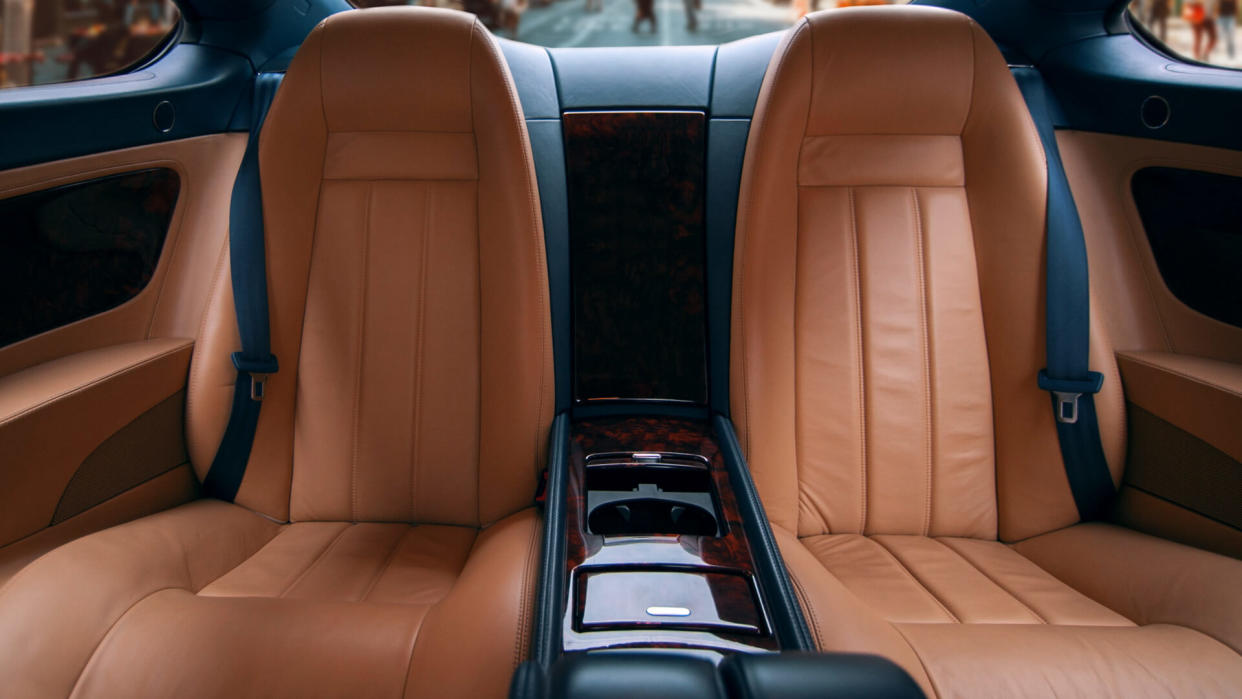New Car Market: Avoid These 7 Expensive High-Tech Upgrades That Aren’t Worth the Cost

If you’re the type of person that owns the same car until the wheels come off, you might be amazed at just how many high-tech bells and whistles are available to new car buyers right now. As someone that didn’t have a backup camera until a few years ago, I can tell you that some of these features can be massive quality-of-life upgrades.
That’s not always the case, though. Complicated user interfaces, distracting notifications and the inevitable bugs and glitches that come with new technology can make some high-tech upgrades more of a nuisance than a bonus — and many of them come with a hefty price tag. So which of the add-ons out there should you avoid, at least until the tech has enough time to get stable? Auto experts gave us their top choices to look out for.
Find Out: 7 Best Sports Cars That Are Worth Every Penny
Up Next: How To Get $340 Per Year in Cash Back on Gas and Other Things You Already Buy
Advanced Infotainment Systems
It seems like many new cars these days are rolling off of the line with what looks like a big-screen TV on the dash. These are called infotainment systems and typically include things like navigation, music, climate control and more.
“When considering high-tech upgrades in new cars, some features may not justify their high costs. Advanced infotainment systems are one such upgrade. While they offer connectivity and entertainment, the technology can be quickly outdated and often comes with expensive, mandatory updates,” said Geoff Cudd, owner of FindTheBestCarPrice.com, a car-buying advice and vehicle review site.
Digital Side-View Mirrors
“Manufacturers try very hard to attract tech-savvy drivers by integrating the latest technology into otherwise ordinary cars. And the prime example of this behavior is the digital side-view mirrors. The biggest issue is that the idea you saw in the movies doesn’t work in the real world because screens that mirror the view are too small to ensure safe, confident driving. Furthermore, the small screens complicate car parking, and visibility becomes even more restricted when weather conditions change,” said Aivaras Grigelevicius, automotive expert at carVertical.
Watch Out: 7 EVs and Hybrid Cars That No Longer Qualify for a Tax Credit in 2024
Wireless Charging
“The issue is not the wireless charging idea itself but its execution. It is very rare to find a charging pad that comfortably fits any modern smartphone. Furthermore, wireless charging pads generate excessive heat during smartphone charging, which could harm the phone’s battery life in the long run. The final and most irritating drawback is the speed of wireless charging. Most of the time, it’s slower than wired charging,” Grigelevicius said.
Autonomous Driving Tech
“Autonomous driving technology, such as automatic lane change or adaptive cruise control, works as it should only in the ideal environment. Any sudden changes in lane markings, weather and traffic conditions cause these systems to turn off or start beeping away their responsibility to the driver. Furthermore, these autonomous driving technologies act as if the car is driven by the learner driver, who doesn’t have required experience to make critical decisions here, now and in the blink of an eye. Since these technologies are still in the beta phase, investing into these upgrades doesn’t make any financial sense,” Grigelevicius said.
Head-Up Display (HUD)
While a HUD in your car might make you feel like you’re in the cockpit with Maverick, Erin Kemp, consumer advocate at Bumper, doesn’t think it’s worth shelling out for in your commuter car. “A head-up display is an extremely beneficial component for racing car drivers. Regular driving inside and outside of cities is not so interesting that one cannot glance at the speedometer. In addition, an HUD on a cheap vehicle can be irritating to some drivers since it appears on a separate screen entirely!” Kemp said.
Gesture Control Systems
Gesture control is an input system that recognizes movements of the human body in order to control a device without any direct physical contact. If you remember the movie “Minority Report” or its associated memes, you know what I’m talking about.
“Gesture control systems are futuristic interfaces that might seem cool, but they can be frustrating in practice. Reaching around or waving your hands to adjust settings becomes distracting and isn’t always intuitive. Familiar physical buttons and knobs offer a safer and more reliable user experience,” said Matthew Edwards at Auto Finance Online.
Panoramic Sunroof
“[…] Expansive glass roofs might seem luxurious, but they come with drawbacks. They can significantly increase cabin temperature, and the extra weight can affect fuel efficiency. Additionally, they offer less protection from UV rays and might not be ideal for all climates,” Edwards said.
More From GOBankingRates
6 Reasons the Poor Stay Poor and Middle Class Doesn't Become Wealthy
This is The Single Most Overlooked Tool for Becoming Debt-Free
This article originally appeared on GOBankingRates.com: New Car Market: Avoid These 7 Expensive High-Tech Upgrades That Aren’t Worth the Cost
